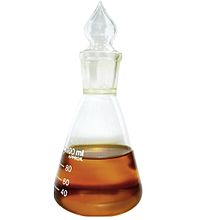
Photo from wikipedia
A feasible approach was developed for the co-production of 5-hydroxymethylfurfural (5-HMF) and furfural from corncob via a new porous polytriphenylamine-SO3H (SPTPA) solid acid catalyst in lactone solvents. XRD, SEM, XPS,… Click to show full abstract
A feasible approach was developed for the co-production of 5-hydroxymethylfurfural (5-HMF) and furfural from corncob via a new porous polytriphenylamine-SO3H (SPTPA) solid acid catalyst in lactone solvents. XRD, SEM, XPS, N2 adsorption-desorption, elemental analysis, TG-DTA, acid-base titration and FTIR spectroscopy techniques were used to characterize the catalyst. This study demonstrates and optimizes the catalytic performance of SPTPA and solvent selection. SPTPA was found to exhibit superior catalytic ability in γ-valerolactone (GVL). Under the optimum reaction conditions, simultaneously encouraging yields of furfural (73.9%) and 5-HMF (32.3%) were achieved at 448K. The main advantages of this process include reasonable yields of both 5-HMF and furfural in the same reaction system, practical simplicity for the raw biomass utilization, and the use of a safe and environmentally benign solvent.
Journal Title: Bioresource technology
Year Published: 2017
Link to full text (if available)
Share on Social Media: Sign Up to like & get
recommendations!